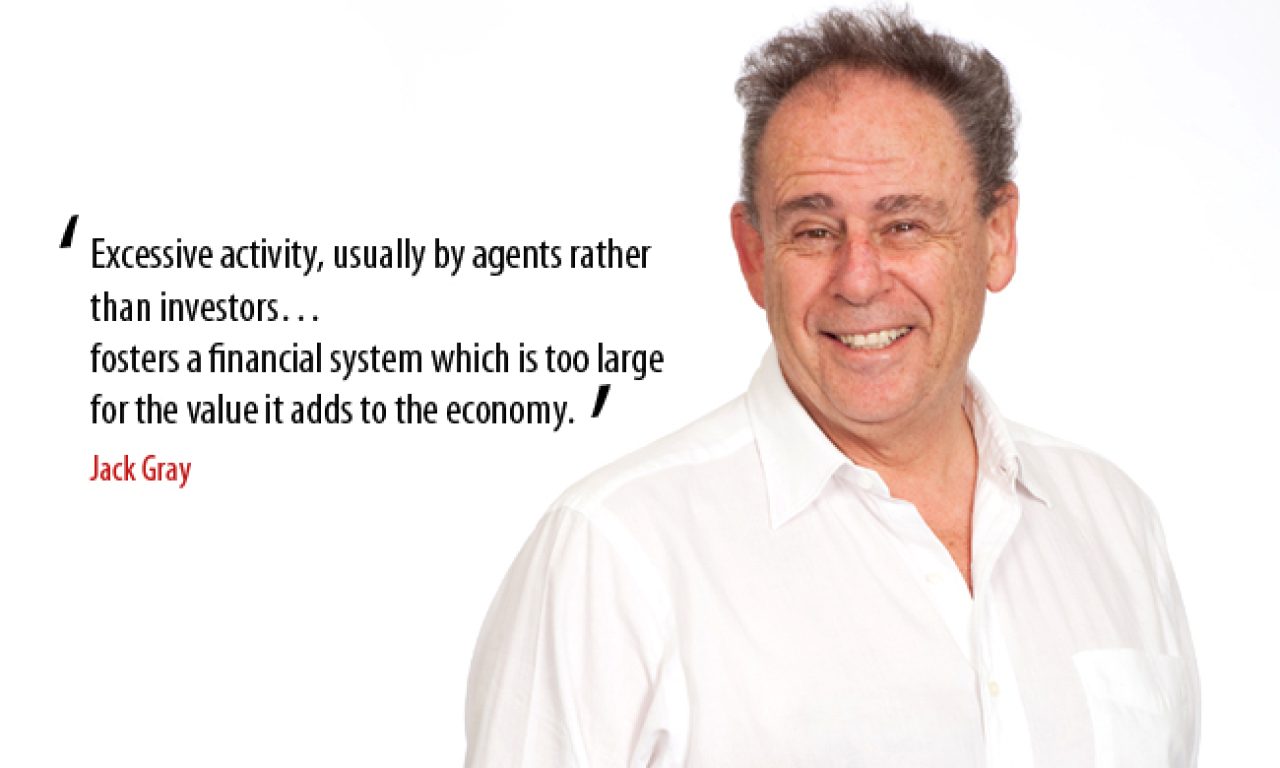Jack Gray, academic, fund manager and usually polite stirrer, this month addressed the board of America’s largest pension fund, CalPERS, in Monterey, California, on “Risk Inflation”. He spoke to Greg Bright about that presentation, his investment beliefs and a potentially better world for financial services.
Like most US public sector funds, the US$280 billion CalPERS is very politically correct. Almost too correct for one of its two guest presenters this month: Jack Gray. But the topic was about risks and Jack had a formal 76-slide presentation to get through. He couldn’t afford to digress too much on any of his pet gripes.
CalPERS has a 12-person board, some of whom are elected, and which includes the Treasurer of the State of California. It has several websites which provide more information about the fund’s workings than anyone other than the keenest manager BDM could ever want to read. And from time to time it has guest speakers.
This month Gray, who works part-time with the University of Technology Sydney, the UK-based Centre for Capital Market Dysfunctionality and as an executive director of Brookvine funds marketer and multi-affiliate manager, was invited to speak alongside another guest, Richard Bookstaber, a former head of risk management for Morgan Stanley, who now works with the Financial Stability Oversight Council of US Treasury in Washington. He wrote a book, ‘A Demon of Our Own Design’, which foreshadowed the financial crisis of 2007-08. He’s a man after Jack’s heart.
Gray said he was given a broad brief and 90 minutes in which to engage the board about the various types of risk. There are no risk-free decisions nor risk-free investments, he says. Risk cannot be avoided. In fact, it is essential to progress in life, including business, art, government, investments, science and surgery.
A theme in his beliefs is complexity and how attempting to simplify investments and pretty much any other part of life through various hedging strategies can actually increase other risks.
He provides supporting evidence from a few other thinkers:
- “The desire for safety stands in the way of every noble enterprise”. – Tacticus, c. 200
- “People are so hungry for certainty they readily subordinate consciousness and conscience for it”. – Freidrich Hegel, c. 1800
- “We know for certain only when we know little. With knowledge doubt increases”. – Wolfgang Goethe, c. 1810
“There are no bad capital market risks,” Gray says, “only mis-priced ones… Risks are ubiquitous and inflating. For instance, risk officers actually increase risk except for those risks that offer no reward, such as legal, compliance and regulatory [benefits]”.
Three other themes of Gray’s beliefs and academic work over the years also played out in his CalPERS presentation. They are the role of economic agents in the system, their participation in generally flawed traditional models used by economists and fund managers and irrationality of individuals due to behavioural biases.
The assumption is economic agents, such as financial intermediaries, have fixed stable preferences, including risk tolerance. But they introduce other layers of risk, such as business risk – their own businesses – and career risk – their own careers. A new one is “process risk”.
The assumption is financial markets form a well-functioning, stationary, stable, negative feedback system. Gray quotes Alan Greenspan from 2004, after the Fed chairman had inflated the economy, led by the housing sector and aided by financial institutions: “Not only have individual financial institutions become less vulnerable to shocks from underlying risk factors, but also the financial system as a whole has become more resilient.” Four years later, Gray says, it was clear that the exact opposite was true. Financial markets form a dysfunctional, non-stationary, unstable, positive and negative feedback system.
Since the global crisis, the increase in regulatory response, like generals fighting the last war, has led to the risk of process obsession. Gray quotes London School of Economics professor, John Kay who wrote a report in 2012 for the British Government on equity markets reform – Review of Long-term Decision Making: “Assessments are based not on whether decisions are any good, but on whether they were made in accordance with… an appropriate process… the ability to articulate the {process} is [seen to be] the key good to outcomes.”
Kay wrote that the stock market exists to provide companies with equity capital and to give savers a stake in economic growth. Over time that simple truth has been forgotten.
Gray says that excessive activity, usually by agents rather than investors, and often driven by commissions, fosters a financial system which is too large for the value it adds to the economy. With the aid of remuneration packages, including share options, for executives of listed companies, this in turn leads to increasing short-termism which hampers long-term investment by corporations.
In our search for better models, there should be more recognition that the world is made up of humans driven by behavior, biology, context, culture and society. And markets are not efficient.
Perhaps approaches from other fields, such as ecology, may offer a better understanding of the interconnectedness and fragility of complex financial systems. “Perhaps the odd behavior of markets are more like an adaptive biological organism,” Gray says.
Perhaps of more accessible and immediate relevance to Australian super funds, Gray’s latest academic paper which is out for review, is about size and potential diseconomies of scale.
In a world now accepting of super fund mergers, which seemed to be encouraged by the regulators either directly or indirectly, Gray asks: “Can small be beautiful? Is there an opportunity for small funds to stand out?”

